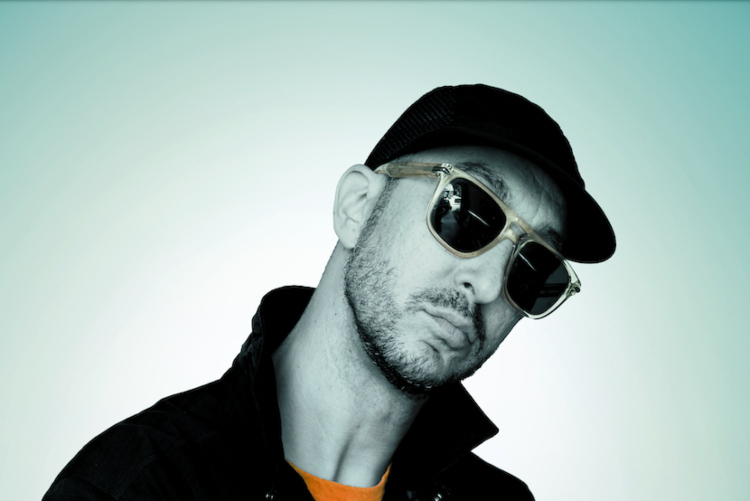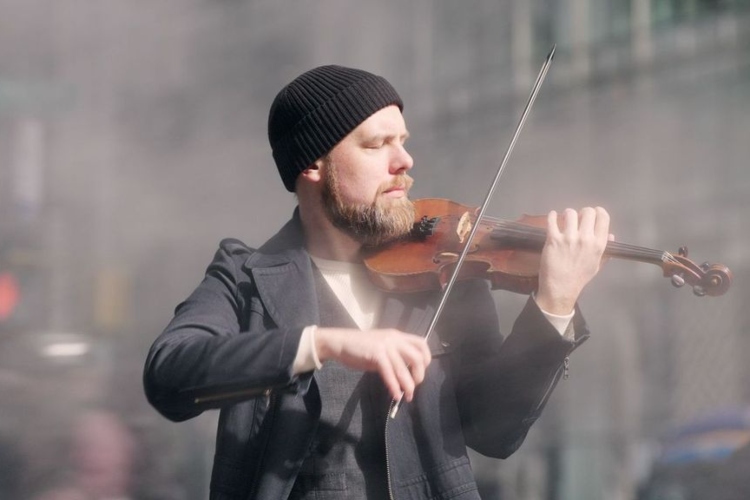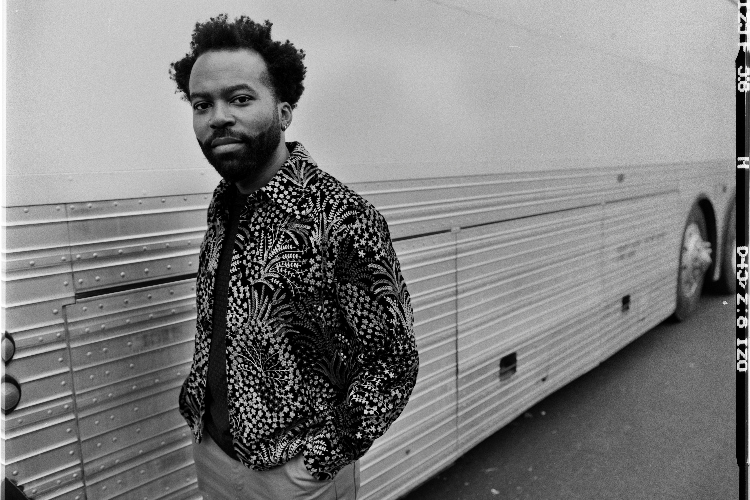Continuum: A Conversation with Steve Lehman on Sélébéyone (Part One)
|
Getting your Trinity Audio player ready...
|
Throughout the ages, music has always been more than just notes or rhythms on a written page. Even the works of the greatest composers, when viewed solely in text, do not fully convey the power and wonder of their music. Similarly, to some degree, an instrument is nothing more than some metal, string, wood, or plastic. Instead, essential to all music is the voice of the artist. Paradoxically, the more personal an artist makes their music often, the more it resonates with others. To many, this is because the music comes from a power higher than the artist. In the words of Wadada Leo Smith, “[Art] is … from a higher force and brought down to us.” A careful examination of Xaybu: The Unseen (Pi, 2022), exposes how central this concept is in Sélébéyone’s music as well.
It is easy for an inattentive listener to overlook the deeper meaning of Xaybu and focus solely on how different the band sounds from others. Even where jazz and hip-hop hybrids are commonplace, Sélébéyone stands out. While rap is nothing new, it is far rarer for some of the vocals to be in Wolof, a language spoken by around 0.07% of the world’s population. Similarly, spectralism – composing with an eye to the acoustic properties of sound – is essentially unheard of in improvised music. Outside of saxophonist/co-leader Steve Lehman’s other projects, that is. And though many artists use live electronics to embellish or slightly manipulate a sound, Sélébéyone adopts them to create entirely new sonic environments.
But focusing on the ensemble’s defiance of categorical conventions gives their music short shrift. Where Sélébéyone (Pi, 2016) explored these concepts as well, the overwhelming focus seemed to be on drafting a blueprint – albeit a fascinating one- for their “intersection” of musical ideas. While their sophomore release is equally expansive in scope – it also picks up cues from contemporary classical music on “Souba” – that sonic diversity seems more a predicate than a goal. With the album, the group builds upon the first album’s base to explore something deeper about the source of artistic creativity. This is done with a particular focus on Sufi Islam, a faith shared by three of its four co-leaders. The album bookending “Time is the First Track” references how both everything and nothing are real and how some things can transcend even time itself. Showing this instrumentally, “Liminal” frequently shifts between notes and tempos, rendering both nearly impossible to place. It sounds otherworldly as if untethered to this planet’s socially imposed divisions. “Djibril” refers to the Holy Spirit and an afterlife, while “Lamina” speaks of God and being freed from darkness. Tying the album’s concept together are vocal clips of Jackie McLean, Billy Higgins, and Senegalese filmmaker Djibril Diop Mambéty where each discusses the relationship between their creative and religious practices.
Ultimately, Xaybu is a record that defies convention but does so in furtherance of a larger objective than merely being different. It is inescapably modern – futuristic even – but addresses heavy ideas that have guided artists for generations. While Sélébéyone received much-deserved buzz upon its release, Xaybu seems even more fully realized. The group’s combination of daring, artistic prowess, and expansive scope is likely to place the album among this year’s finest releases.
We sat down with Sélébéyone’s co-leader/saxophonist/composer/producer Steve Lehman to discuss the album. Over the last two decades, the former Guggenheim fellow and Doris Duke Artist Award winner has established himself as an artist who is always pushing music into new and surprising directions but, often, in furtherance of a larger objective. In this first part of our conversation with Steve Lehman, we discuss the group’s formation, what distinguishes Sélébéyone from most jazz-hip hop hybrids, and Xaybu’s intricate use of electronics.
PostGenre: Sélébéyone is probably the only group that combines avant-garde or experimental jazz with Senegalese hip hop and electronic music. What initially inspired the combination of those influences?
Steve Lehman: That is a good question. Usually, I think it makes little sense to use genre definitions to describe music. It is better to focus on what is going on harmonically or rhythmically in a piece than rushing to label it. The issue reminds me of when I ran across a 1954 radio interview that by Charlie Parker did with Paul Desmond. In it, Bird said he was planning to move to France and study composition with Edgard Varèse at the Paris Conservatory for several years. Of course, Bird passed before he could study with Varèse, but he nevertheless intended to do so. Someone may put a box around Bird as “jazz” and see his music as wholly separate from Varèse’s sound-masses. But, the reality is that Varèse’s concepts seemed pretty central to Parker’s thoughts on composition.
But that said, the meeting of concepts from jazz with those from Senegalese hip hop, truthfully, came from [saxophonist and composer] Maciek [Lasserre]. Maciek did a record where he worked with many West African musicians and played saxophone with them. The album did not circulate well but was fascinating. Maciek also did a record called Eskisse (self-release, 2011), named after the French word for “sketch.” It had a Senegalese hip-hop duo called DABRAINS and Maciek also asked me to play on it. I felt like the project was going in a very exciting direction. The Wolof language and the cadences of how it sounds phonetically seemed very fresh. I encouraged Maciek to continue to pursue the ideas from the record.
A few years later, an opportunity arose for Maciek and me to build on those ideas together. There was just something instinctive about my attraction to the project. Something excited me greatly about working with Senegalese rap. Thankfully, in some ways, it turned out the four principal composers for this group – Maciek, [High] Priest [AKA HPrizm], Gaston [Bandimic], and I – have a lot in common.
PG: Other artists have pretty heavily explored the idea of combining jazz and hip hop. But Sélébéyone sounds distinctly different from most jazz-hip hop hybrids. Why do you think that is the case?
SL: The international component, particularly the use of Wolof, is unique. But, even beyond that aspect, there is the fact we have one person doing several roles on each track. Most people tend to self-identify as part of either the hip-hop community or the jazz community. On a project that combines those influences, there is often a division of labor where the jazz people do the instrumental stuff and the hip hop people handle production and programming. Sélébéyone is one of the very rare cases where, on a given track, a single person handles all of the compositional, instrumental performance, electronics, production, and drum programming roles.
That’s not to say there aren’t influences from other projects, of course. My buddy Craig Taborn’s first Junk Magic album (Thirsty Ear, 2004) was a huge inspiration. That record was pretty important to me because it is by someone who is so accomplished and has a unique perspective on not only instrumental composition but also electronic media. I can’t think of anyone off the top of my head who integrates those two areas as well as Craig on both Junk Magic records.
Something else that stands out to me in those ways is the projects Mike Ladd has with Vijay Iyer. I hold those in very high esteem. Mike is perhaps a little more spoken word than rap but what they do with electronic sounds is incredible.
PG: So it is primarily the unity of roles that makes Sélébéyone sound so different?
SL: I think that unity of roles is a big part of why we sound different, but it is not the most significant reason. It may sound a little cliché but what distinguishes the group the most is the people in it.
[Drummer] Damion [Reid] is a huge hip-hop head. Like you and I are incredibly invested in improvised music and constantly seeking out unique voices, that’s how Damion is with hip hop. He and I share tastes in music by people who are a little more outside of the spotlight but cultivate a truly original voice. Damien is one of the people that thought incredibly deeply about how to transfer the sound of drum programming and MPC to the kit. You can also sense that on the records he has done with Robert Glasper. In My Element (Blue Note, 2007) was the first record where I could hear Damion taking J Dilla’s beats and playing them on an acoustic kit.
And then you have [rappers] Priest and Gaston. They never phone in the lyrics. Instead, they take time to write incredibly meaningful texts. Maciek and I also spend a lot of time trying to pull together the sampling, programming, instrumental composition, and production. The attention to detail that all of us take helps us cultivate a unique group sound.
PG: As far as the electronic elements of the band’s music, are they influenced by George Lewis’ work exploring the musical interaction between man and computer? You studied with Lewis at Columbia University, correct?
SL: Yeah, George was one of the main people I worked with at Columbia when I was getting my doctorate.
George does so many different things musically. He heavily emphasizes real-time interaction with virtual intelligence and getting computer programs to produce sound intelligently and respond to an improviser. We are not doing that with Sélébéyone, so it is not a direct correlation.
But George’s influence is still in my use of electronics. He tries to pursue the music he’s excited about and does not worry too much about what to call it. That is certainly something I believe in as well. In general, George is a big influence on me in terms of his concepts on how computers and humans interact, and how electronic sound can contribute to improvised music.
PG: Xaybu‘s use of electronics seems to set a unique environment for the group to operate.
SL: There has definitely been no shortage of pre-recorded samples on either Sélébéyone album. We did have a little more freedom with the use of samples on Xaybu than on the first record, largely because we were more accustomed to integrating them into our group’s sound and ideas. A piece of mine on the record, “Liminal,” is a good example. It explores sounds that don’t fit into a grid either because they are speeding up or slowing down. They also have a more organic feel to them pitch-wise. The composition slides from one place to another and explores how far you can push and still feel a connection to the grid.
PG: The electronic elements on Xaybu also include clips of speeches by Jackie McLean and Billy Higgins. You were mentored by McLean and Damion Reid by Higgins. Were these clips included partly to underscore that as radical as the group sounds, it also has ties to tradition?
SL: It’s wild how those speeches tie to the record. There are so many connections. There is the mentorship element, as you mentioned.
But on another level was the connection to Islam and our thoughts on music. It was not something I originally considered, but as I dug more deeply, I saw that connection as well. Priest, Gaston, and Maciek are all Sufi Muslims and share many perspectives on the broader purpose of music. You can sense that on the first album with the track called “Laamb,” which was named after a form of professional wrestling in Senegal. In that song, we used an opening quote by one of the more famous wrestlers where he talked about the role of music as one prepares for a wrestling match and how the music reminds you of your transcendent power and what you can do creatively and spiritually. And “Are You in Peace?” was the translation of the Arabic “as-salamu alaykum”, meaning “peace be with you.” We have been even more overt on this element of the music on Xaybu.
For all four of us, music is the most prominent manifestation of our spirituality. Both Higgins and Jackie converted to Islam during their lives and hearing them articulate their views on their faith and music aligned with the context of this project. Hearing those clips affirmed, in some ways, that our music is part of a continuum.
Click here for the second part of our conversation with Lehman where we discuss his compositional process for Sélébéyone, spectral harmony, and Xaybu‘s focus on the unknowable and unseeable.
Xaybu: The Unseen will be available on Pi Recordings on August 26, 2022. It can be purchased on Bandcamp.
More Information on Steve Lehman can be found on his website.
Photo credit: Willie Davis




3 thoughts on “Continuum: A Conversation with Steve Lehman on Sélébéyone (Part One)”